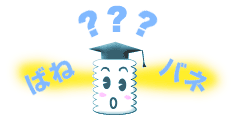
Episode 1 : Are “ばね” and “バネ” different?
Both mean “spring” in Japanese. The word “spring” can be written in both Hiragana “![]() ” and Katakana “
” and Katakana “![]() “.
Today’s theme is whether the word “bane (spring)” represents different things when written in hiragana or in katakana. Do you write the word in hiragana? Or in katakana? (I’m also interested in this ratio. I think I can see the ratio by asking PIOLAX Web Members this question.) Do you have a conviction when you write “bane” in hiragana or katakana (although this is not such a serious matter)? Well now that the preamble is over. Let’s move on to the main part.
“.
Today’s theme is whether the word “bane (spring)” represents different things when written in hiragana or in katakana. Do you write the word in hiragana? Or in katakana? (I’m also interested in this ratio. I think I can see the ratio by asking PIOLAX Web Members this question.) Do you have a conviction when you write “bane” in hiragana or katakana (although this is not such a serious matter)? Well now that the preamble is over. Let’s move on to the main part.

I suppose you’ve already got the idea. Basically, writing “bane” in hiragana is right. “But…,” you may think, “I come across ‘bane’ in katakana quite often.” Yes, we can see the word “bane” written in katakana everywhere. Does the word “bane” represent different things when written in hiragana or in katakana? Except the cases when the word “bane” is written in katakana intentionally, it seems that most people use these two writings without any particular reason (either writing is OK). Then, in what cases it is written in katakana purposely? First, when the word “bane” is used in proper names such as company name or product name. Other reason to write the word in katakana is that if you write “bane” in hiragana, the word becomes more difficult to distinguish from adjacent words, as shown in the following examples.
| Example 1: | When Hiragana is used |
| Example 2: | When Katakana is used |
That’s it for today. By the way, you should be careful when you write the word in alphabet as “bane” because it means “a cause of continual trouble” in English. Well then, see you next time!
Written by Banekko (a child of spring)

